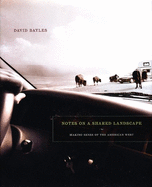

Max Hooper Schneider’s Hammer Museum installation is part “Raiders of the Lost Ark,” part Pirates of the Caribbean ride, part diorama of consumerism run amok. And then there’s a chain reaction of seeing.”Įntertainment & Arts Review: Welcome to Max Hooper Schneider’s disturbing dystopian extravaganza I don’t know what size I want to be anymore. In the case of the diving bell vitrines, “you get sucked in fast, and then suddenly, you get this mind-altering shift of scale. Hooper Schneider revels in recasting the familiar as unfamiliar, absurd, extreme. In an aquarium in his 2018 show at Jenny’s (a gallery that has since relocated to New York), for instance, tiny fish darted among their fake counterparts, swimming through trash/treasure heaps of costume jewelry. Across the range of Hooper Schneider’s work, the miniaturization or abbreviation of a world (think dollhouses, model trains) coexists with an elaborate accumulation of stuff defining or filling that world. The vitrines themselves are distillations, and the cut-out portholes that provide a view inside are a further attempt to concentrate focus.

Everything is a swarm of bodies teeming and festering and breaking down and regrowing.” “If you look hard enough, and think through the normal binaries of life, there’s a lushness to everything. Maximalism, horror, tragedy - I traffic in those, but only as tools to access things that are radically hopeful and joyous and exuberant.”

My work looks at the crises, but it does seduce. “We’re living in the lethal effects of centuries of wanton destruction. “We do live in an age of crisis,” he says. The rooms of the downtown gallery will be darkened, and Hooper Schneider’s “disorienting vistas,” microcosmic scenarios that allude to macrocosmic phenomena of ecological, biological, anthropological and sociological distress, will be illuminated dramatically within. “Falling Angels,” an extensive show of the L.A.-based artist’s recent experiments in biome devastation and regeneration, opens May 6 at François Ghebaly. Sensory gluttony that yields dense nourishment for the mind. The viewer’s encounter with his sculptures and installations, he has written, is a dynamic exchange between bodies “that is more akin to the mutually transformative process of eating than spectatorship.”Īnd not just ordinary eating, but a charged, complex kind of feasting. A dedicated runner who says the sport leaves him constantly hungry, Hooper Schneider reaches often for metabolic metaphors.


 0 kommentar(er)
0 kommentar(er)
